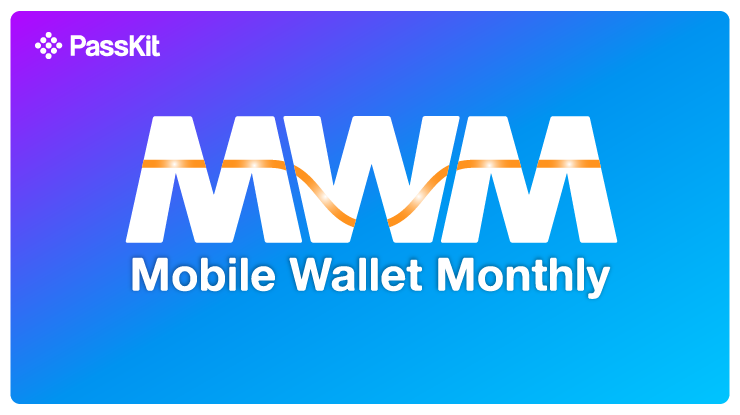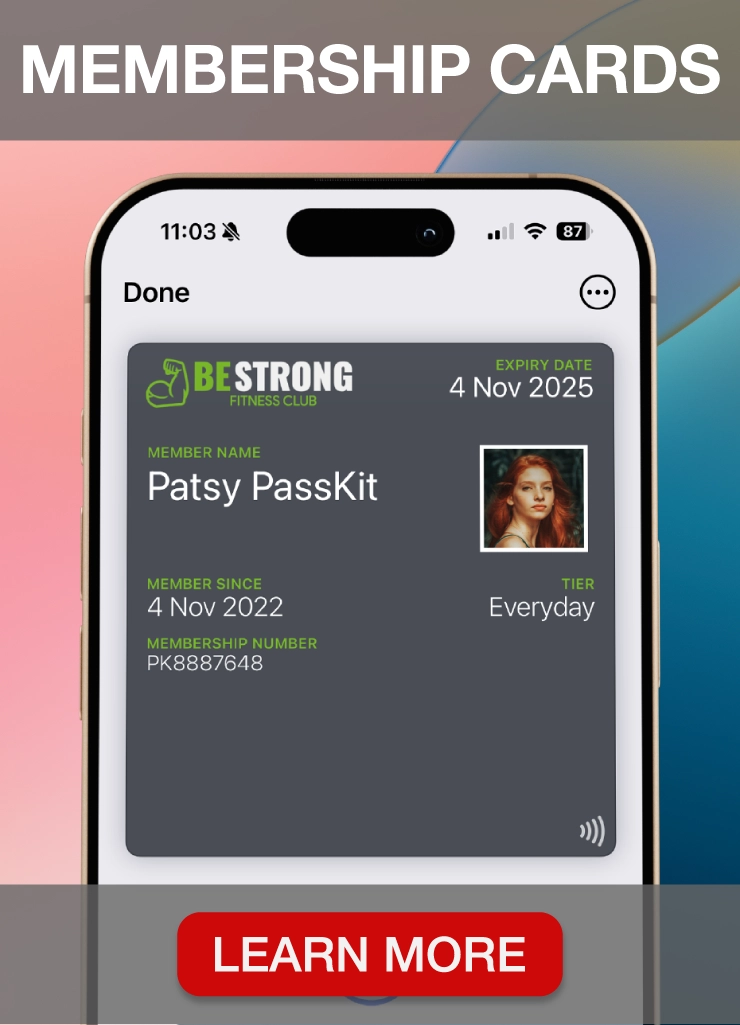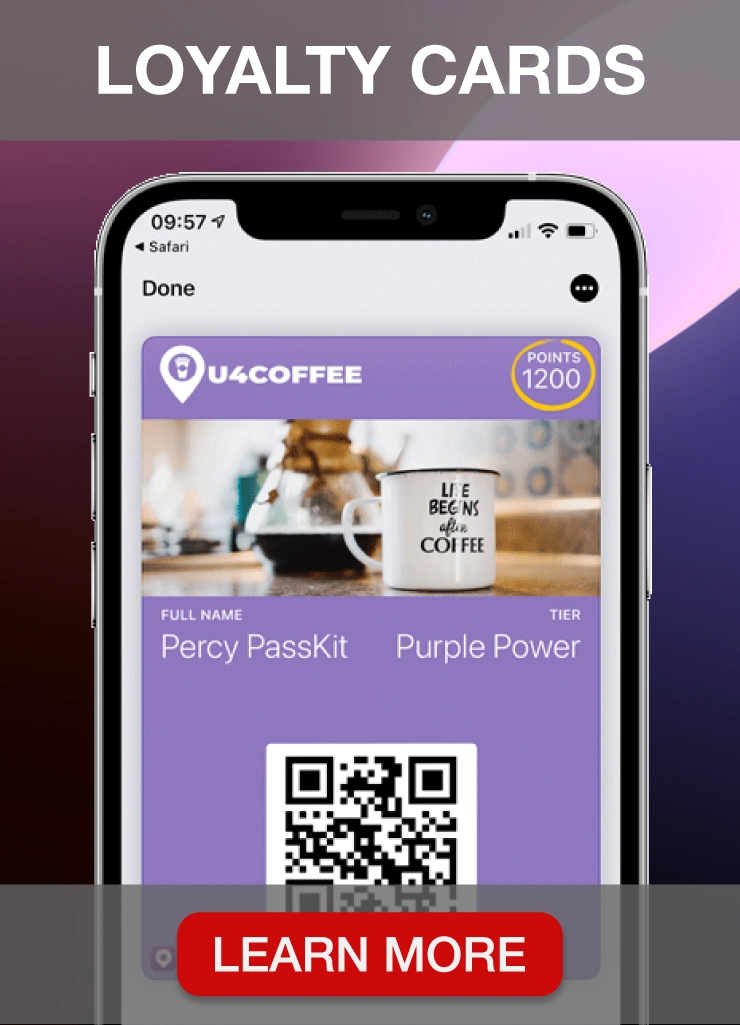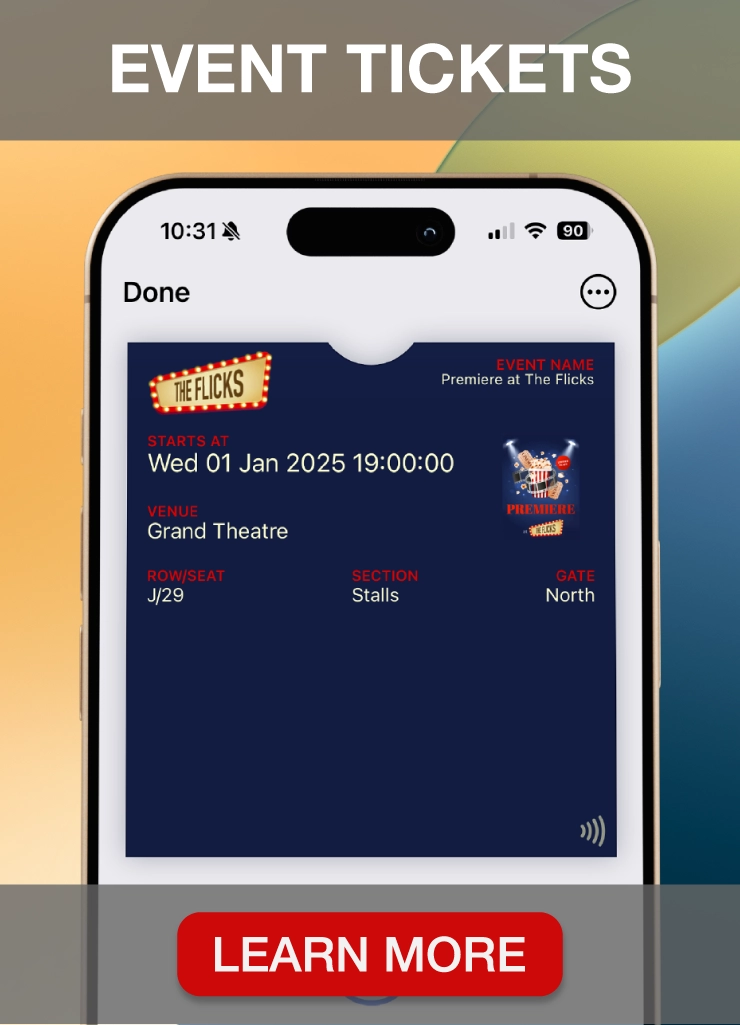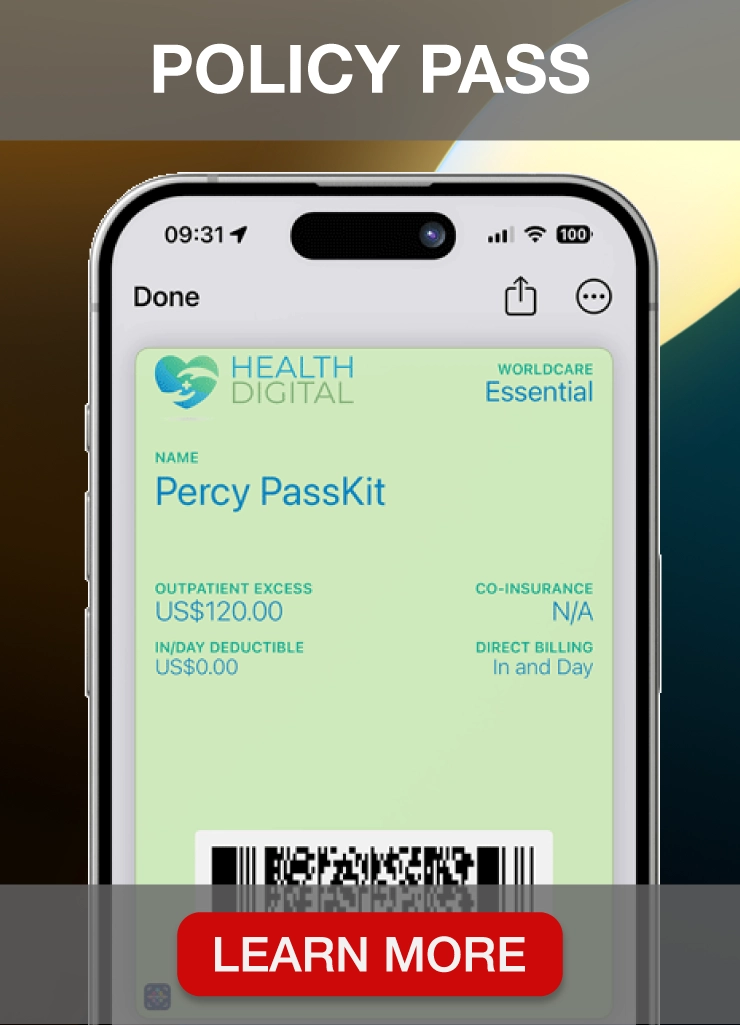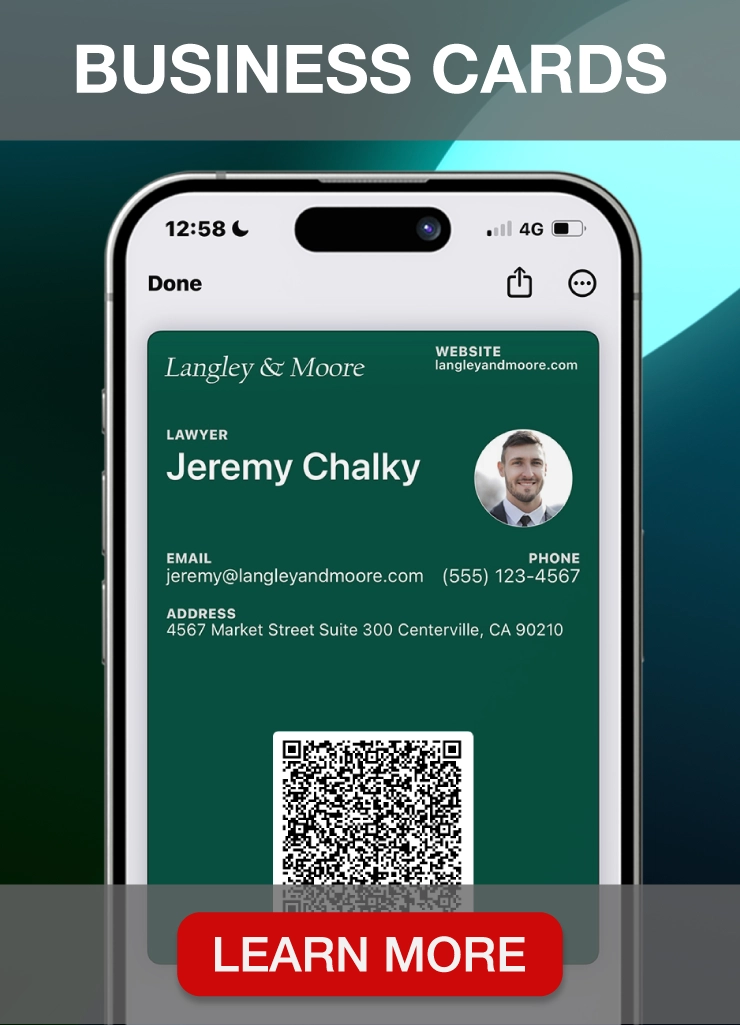The internet has revolutionized our lives. Every piece of information is constantly available on our computers, mobile phones, and other devices. Customers searching for coffee shops, hotels, or nail salons in their area might come across your business thanks to the internet.
Building an online presence is a must because there are over 4 billion active internet users. You practically don’t exist if you don’t appear in Google searches and social media.
The internet can also bridge the gap between the online and offline worlds. For instance, customers may leave an online review after visiting your physical store. Those looking up your business online will see what experience you have provided to your customers.
Connecting the two worlds and creating a frictionless experience is a must. PassKit is the right solution for this. Our digital loyalty software integrates with Apple Wallet and Google Pay, using these mobile wallets as a medium to provide a connected customer experience. Customers can save digital loyalty cards or membership cards in these wallets, collect points on their mobile phones, and redeem rewards at your store. Enjoy 45 days of unlimited use now!
You must keep abreast of the internet’s latest development to know how to use its advantages to upgrade your business. The hottest buzzword right now is Web 3.0—a new iteration of the world wide web.
What is Web 3.0 exactly? We’ll teach you all about it in our Web3 for dummies guide. Let’s start with a short overview of the world wide web.
How the World Wide Web changed our lives
Image source: EWM
What would our lives look like today if there were no internet? It is a question most of us have asked once or twice. Luckily enough, we don’t know the answer.
What we do know, however, is that the internet has changed our lives. It is our primary source of information and preferred communication medium. We use it for almost everything we do. We are ordering from a restaurant, paying for a fitness pass, or sharing a picture with a friend.
Years ago, you had to be physically present to do any of this. Today, however, a click of the button is all you need. That is why 65.6% of the world’s population has internet access.
The digital world enables people and businesses to create content, interact and enter a new reality. With this in mind, the internet has affected numerous areas of our lives:
- Communication – the web has removed communication barriers. If your business is located in Los Angeles, customers from London can still interact with you and learn more about your offer.
- Education – it is now easier to access knowledge and information than it was decades ago. It means people have countless learning opportunities. Students and teachers can work together without any constraints.
- Remote working – the internet enabled companies to introduce remote work. That proved to be useful during the coronavirus pandemic. Continuing business as usual at the time wouldn’t have been possible without the web.
- Privacy and security – Internet safety has become a critical issue. Studies show that 43% of all data breaches happen to small and medium-sized businesses. So, in a way, the internet has negatively affected our privacy and security.
The web will change our lives even more with the rise of a new internet generation—Web 3.0. What has influenced its emergence? We’ll discuss this below.
The rise of Web3
Image source: MetaSchool
Web 3.0 is an umbrella term that marks the internet’s future. That future includes artificial intelligence, machine learning, augmented reality, decentralized networks, and blockchain technology. It is much more impending than you would think.
What has influenced the rise of Web 3.0? The need to eliminate the mediators in the digital world.
We are currently living in the Web 2.0 era. Big tech companies like Facebook and Twitter control this version of the internet. Most of these platforms are free, but internet users pay them with their personal information.
Tech giants use and sell our data for advertising purposes, e.g., to show targeted website ads. Every click translates into revenue. Web 3.0 wants to take power away from big tech companies and give it back to the people.
In the next generation of the internet, people will control their personal information and use a personalized account to shop, send emails, or post photos online.
A recent Cisco study revealed that 86% of customers value data privacy and demand more control. That is the underlying factor that led to the rise of Web 3.0.
As Web3 is the internet’s future, it’s time you learn more about it.
Web3 for dummies: The basics
The decentralized internet has gained much traction lately. It doesn’t surprise us because the notion of having no middlemen to profit from our data sounds appealing. We just need to wait and see when this idea will become our reality.
Let’s tell you more about the new web in our Web3 for dummies guide.
What is Web3 or semantic web?
Web 3.0 or semantic web is a new concept of the world wide web that benefits users who make content instead of the platform where this content is published. It promotes decentralized networks based on blockchain technology. This tackles ownership and data issues which are the main drawbacks of Web 2.0.
The semantic web is based on:
- Decentralization
- Artificial intelligence (AI) and machine learning (ML)
- Connectivity
- Trustless and permissionless networks
These four fundamentals support Web 3.0 in creating an open-source web that is free of centralized control.
As we mentioned, big tech companies have centralized power over the internet. How enormous is their influence over the web?
According to research, 43% of the internet is controlled by five companies (Facebook, Amazon, Apple, Google, and Netflix). These companies primarily store and distribute web content to internet users.
With blockchain as the underlying technology, Web 3.0 creates a decentralized internet where users profit from their content. You don’t need to trust major companies to deliver their online services. Instead, you can use a blockchain to create apps on a decentralized server. Anonymous nodes maintain those apps.
Web1 vs Web2 vs Web3: The key differences
Image source: World Economic Forum
Most of us have lived through the Web 2.0 stage of the internet. So, it might be difficult to imagine that the web had an earlier iteration that significantly differed from the one we use today.
It might be even more challenging to envision the web’s future where a decentralized network gives content and data ownership to the regular user. That is why we’ll go over the web’s history below.
Web 1.0: Read-only
Web 1.0 is the first stage of the web. In the early days, there were a few content creators on the internet. Most internet users would only consume content without contributing anything.
This iteration primarily had static content. You would rarely find visuals or interactivity during Web 1.0.
There were four main characteristics of Web 1.0:
- Web content came from the server’s static file system
- Frames and tables provided page layout
- Common Gateway Interface (CGI) was used to create pages
As almost no interaction between users existed, Web 1.0 is known as the read-only web.
Web 2.0: Read-write
The Web 2.0 development was primarily influenced by consumers who wanted a better web that would enable them to form their own digital identities.
Social media networks facilitated the emergence of Web 2.0. Instead of companies publishing content consumers would view, internet users have platforms where they can share user-generated content and interact with others.
Unlike Web 1.0, Web 2.0 offers advertising-driven business models. Big tech companies have benefited significantly in terms of their profit. The users? Not so much.
The main characteristics of Web 2.0 are
- User-generated content
- Rich user experience
- Dynamic content
- User participation
Another term for Web 2.0 is the read-write web because users can consume and create content.
Web 3.0: Read-write-own
Web 3.0 uses the most advanced technology to provide decentralized internet to users. It leverages blockchains, cryptocurrency, and non-fungible tokens (NFT) to create a more open online environment.
Users won’t be dependent on tech giants anymore—they will regain power over ownership soon. That is why Web 3.0 is referred to as read-write-own.
To better understand the differences between the three generations of the internet, take a look at our comparison table:
| Web 1.0 | Web 2.0 | Web 3.0 |
| The simple web | The social web | The semantic web |
| Read-only | Read-write | Read-write-own |
| Information sharing | Emphasis on interaction | Focus on the individual |
| Web forms | Web apps | Smart apps |
| Banner advertising | Interactive advertising | Behavioral advertising |
| Decentralized | Centralized | Decentralized |
Web3 statistics in 2022
Here is what statistics show us about Web 3.0:
- Over 400 Web 3.0 companies have obtained $4.5 billion in funding thus far
- The Web 3.0 blockchain market could be worth $8 billion by 2030
- The leading Web 3.0 crypto networks have a total market capitalization of $27.5 billion
- 81% of consumers who know about Web 3.0 believe it will positively impact their wellbeing
Although still developing, Web 3.0 is like a dream come true for internet users who want to dominate the digital world. The above statistics show a high chance of decentralized networks becoming widespread.
Now, let’s see what Web 3.0 will exactly bring to people.
What changes will Web3 bring to internet users?
Web 3.0 will change the way people interact with the internet. Users won’t be dependent on platforms that now enable them to publish content or view someone else’s. Users can launch their platforms and monetize them.
The decentralized web relies on independent computers in such a way that it provides private and censorship-free access to information. It isn’t only about keeping your data, digital assets, and identity safe. Web 3.0 wants to return the internet where it belongs—in your hands.
When you post content on Instagram or Facebook, your personal data doesn’t belong to you. It is hosted in some data center miles away.
The same goes for online gaming. The characters, rewards, and earnings from online games are the property of Ubisoft or other gaming companies.
Web 3.0 plans to change it. Every item you collect in online games or every photo you post on social media will belong to you. Its value will be measured through digital currencies, meaning you will earn revenue, not big tech companies.
Web3 for dummies: 5 benefits you should know
Image source: The New Tech
A more transparent web brings numerous benefits to users, including
- Data ownership – blockchain technology and decentralization are the driving forces behind Web 3.0. They eliminate the intermediaries and give users ownership of their content. Every piece of data you publish will be individually encrypted.
- Increased privacy – a decentralized network allows users to control their digital identities and personal information. People have more rights to determine what information is available and to whom.
- Unrestricted access to information – Web 3.0 doesn’t ask for “permission,” and prominent companies can’t limit users’ access to information or services.
- Collaboration – Decentralized autonomous organizations (DAOs) also power Web 3.0. It is an organization coded as a computer program. It runs on blockchain and enables anyone to participate in it.
- Permissionless blockchains – A blockchain network is open to anyone who wants to access it. There will be no discrimination based on income, gender, geography, and other factors.
Web 3.0 brings the above benefits to the table thanks to its key features.
Web3 for dummies: 6 key features
Image source: Expert
Although Web 3.0 is yet to be standardized, it does have six key features:
- Decentralized web – this is the main feature of Web 3.0. The HTTP protocol locates information on a single server in the current web itineration. Web 3.0, however, stores information in multiple locations simultaneously. It limits censorship.
- Blockchain technology – this feature enables Web 3.0 to change the way we store and manage information over the internet. Blockchain allows more direct relationships between users and safer transactions such as NFTs and decentralized finance.
- Cryptocurrency enablement – cryptocurrencies are decentralized projects that automate transactions and use smart contracts. Users will receive more payment services, and their content won’t be censored. They will earn digital assets for the valuable content they post on the internet. The crypto industry will reach new heights because of this.
- Artificial intelligence and machine learning – Web 3.0 will leverage artificial intelligence to ensure computers understand information like humans. Machine learning is there to use data and algorithms to predict outcomes accurately. Computers will produce more relevant results users want to use.
- Augmented reality and virtual reality – you probably heard of the Metaverse. If you haven’t, this is a network of 3D virtual worlds. People can use augmented reality and virtual reality to interact with other users. They feel and experience similar things as they do in reality. Web 3.0 is required for the Metaverse to launch.
Web 3.0 uses some of the most advanced technology, including artificial intelligence and blockchain, to create a more user-centered online experience.
Web3 for dummies: 7 drawbacks you should be aware of
Access to cryptocurrencies, decentralized finance, virtual reality, and artificial intelligence make Web 3.0 an appealing notion. However, the new generation of the internet also comes with certain drawbacks.
Here are some of them:
- Technology still needs to advance to launch Web 3.0
- A device would need to have above-average specs to support Web 3.0
- Companies would have to update their existing websites to avoid appearing outdated
- Newcomers may have difficulty grasping Web 3.0
- Privacy policies need to be introduced
- Accessing users’ personal data will be easier if privacy policies are not in place
- People will spend hours surfing the web
Let’s now see what industries Web 3.0 will affect.
Web3 for dummies: What industries will be affected by Web3
Image source: PC Mag
Blockchain and artificial intelligence-powered Web 3.0 can impact all areas of our lives. Advancements in technology changed how we do business, so Web 3.0 will also leave its mark.
Here are the industries that will be affected by the new internet generation.
Banking and finance
Decentralized finance (DeFi) is already a $77 billion industry. Digital currencies have also become valuable around the world. Web3 will revolutionize the banking and finance industry further.
Namely, DeFI will make this industry more decentralized and give more control to users. The banks will have to digitize currency to provide services such as instant bank transfers. It is much easier to do this with Web3.
Real estate
Image source: NFT News Today
Blockchain can create a distributed ledger, enabling land and resources to be transparent. Images and records can become a part of a blockchain network. It makes buying and selling property as easy as purchasing and owning a digital certificate.
Web 3.0 will speed up real estate transactions, simplifying the process.
E-commerce
Image source: DEV
The middlemen, i.e., central authorities, connect buyers and sellers in the online shopping environment. Web 3.0 can create a marketplace where vendors can directly advertise their products or services and sell them to customers through open platforms.
Advertising
The advertising industry has significantly moved online because of Web 2.0. Targeted ads are now the go-to advertising method for businesses of all sizes. But to deliver relevant ads, big tech companies must gather and sell user data. It means that your personal information isn’t secure.
Web 3.0 works differently than Web 2.0. Losing ownership of personal data is what Web3 wants to avoid. Its goal is to ensure users decide how to share their data.
Healthcare
Everyone wants to keep their medical records secure. Storing them on blockchain will provide an extra layer of protection that hackers can hardly bypass.
Another benefit is allowing your care providers to share your record between themselves. They can analyze your diagnosis together to determine how they can help you.
Web 3.0 can also connect real-time health data to the blockchain. AI algorithms can review them and suggest if you need medical assistance.
As Web 3.0 advances, more use cases will appear. One thing is sure—the blockchain has the potential to change most industries for the better.
It will also change the way we shop online. Here is how.
Web3 shopping innovation
Image source: NFT Premier
Last year, the interest in crypto and blockchain technology reached new heights. The main driving forces were non-fungible tokens and Web3. These concepts promise to change how we approach the digital world, including online shopping.
Some crypto wallets will probably support Web 3.0 apps. Users will be able to do a wide range of activities—from making payments to ordering food. An advanced protocol will protect the wallet and hold information regarding a user’s online identity, digital assets, and much more.
Consumers can access a crypto wallet on their laptops or mobile phones. They can start a unique Web 3.0 shopping experience by logging in. This experience will not differentiate much from the traditional way of shopping.
Take PassKit, for example. Our platform helps your business create digital passes that customers access on their built-in digital wallets. Each purchase or visit to your business is visible in those digital wallets through points on your reward program.
This creates a connected customer experience, bridging the gap between online and offline. Our platform lets you distribute digital loyalty cards or membership cards on multiple channels such as SMS marketing, email marketing, and the company website. This enables you to reach more consumers and improve a campaign’s success.
Using online wallets is the future of shopping. Bring the future to your customers with PassKit.
Web3 platforms examples
There are numerous early adopters of Web3 technology. We will mention seven to show that companies are willing to embrace Web 3.0 and avoid poor data management.
1. OpenSea
Image source: OpenSea
OpenSea is a Web3 marketplace specializing in NFTs. Users can buy, sell or trade their NFTs with other users. You can create NFT on this platform and showcase them to the OpenSea clients.
This Web3 platform also lets you list NFTs you bought elsewhere. For instance, you might have played blockchain games and earned an NFT. You can put it to good use and sell it on OpenSea.
2. Bitcoin
Image source: Bitcoin
Bitcoin is a payment network that lets users exchange digital currencies and make transactions. As you might know, bitcoin was one of the first decentralized online currencies. Thanks to platforms like Bitcoin, it is much easier to purchase it.
As a Web3 platform, Bitcoin operates without any central authority. The network manages transactions and issues bitcoins to users—there are no middlemen.
Bitcoin is always on the lookout for cryptocurrency. It aims to provide accurate descriptions and alert network participants about the value of bitcoin.
3. Sapien
Image source: Sapien
Sapien proves that Web3 technology can be used to build independent networks. This social news platform advocates free speech, democracy, and privacy. Built on Ethereum, it wants to combat the issues appearing on popular social media platforms, such as fake news, censorship, and bots.
The network’s mission is to return the control to the users and encourage them to contribute to the social media landscape. You can build your reputation online through Sapien by sharing valuable and relevant content.
4. Augur
Image source: Augur
Augur is a DeFi project based on the Ethereum blockchain. It is a protocol aimed at prediction markets. People can use it to bet on sports, world events, economics, and more.
When you access Augur, you can trade on future events regardless of where you are. Users make their predictions and benefit from the best odds and low fees. Augur lets them keep a considerable portion of their winnings compared to other platforms.
5. Diaspora
Image source: Diaspora
Diaspora is a social network based on decentralization, freedom, and privacy. Since no one owns the network, user data won’t be sold for advertising purposes.
The company promises that no big corporation will control Diaspora. Its appeal is that it tackles privacy concerns that appear on centralized social media platforms.
It relies on pods to form its network. Users can create their pods or join someone else’s. It keeps the community growing and makes it even more connected.
6. Uniswap
Image source: Uniswap
Uniswap is another cryptocurrency exchange marketplace. It leverages a decentralized finance protocol so that users can exchange tokens and cryptocurrencies.
A financial marketplace connects all Uniswap clients who want to swap or buy cryptocurrencies. This Web3 platform is perfect for developers who want to build DeFi apps and tools based on Ethereum.
7. Everledger
Image source: Everledger
Everledger differs from other Web3 platforms we mentioned. It is an asset tracking and supply chain company based on blockchain. It uses blockchain to keep records of assets secure.
The company knows that users can easily lose receipts and certificates. They need blockchain technology to protect these documents and ensure they are not lost. You can also quickly transfer ownership between two users through Everledger.
Web3 for dummies: Final words
The internet has undergone many changes from Web 1.0 to Web 2.0. However, it still needs improvements that Web 3.0 can deliver. Users demand more control, increased privacy, and total data ownership.
That is why some companies have started to turn to Web 3.0 to build their platforms and apps. Creating user-oriented internet is crucial when people have started to value their privacy more.
Before Web 3.0 becomes a thing, ensure you remain focused on your customers. Impress them with a frictionless connection between their online and offline experiences with PassKit. Don’t make them carry physical loyalty cards or vouchers when they can access all of them on their built-in digital wallets.
Web3 for dummies: FAQ
As Web 3.0 is the latest buzzword, we decided to answer some of the most burning questions about it. Let’s go over them below!
Is Web3 blockchain?
Web3 is a new iteration of the web which is based on blockchain technology. It aims to provide a decentralized web where users have more control than big tech companies.
Is Web3 only Ethereum?
No, it isn’t. It also uses blockchain and other digital assets like NFTs to build a new, better internet.
What is the difference between Web2 and Web3?
The main difference between Web 2.0 and Web 3.0 lies in content ownership. Web 2.0 allows consumers to post user-generated content. Even though they are the creators, tech giants like Facebook and Google own this content. Web 3.0 wants to create a decentralized network where users have complete control and ownership of their content.
What is the future of Web3?
The future of Web3 is a network that eliminates the intermediaries from the data, information, and content exchange. It will put the user in the center of this exchange.

